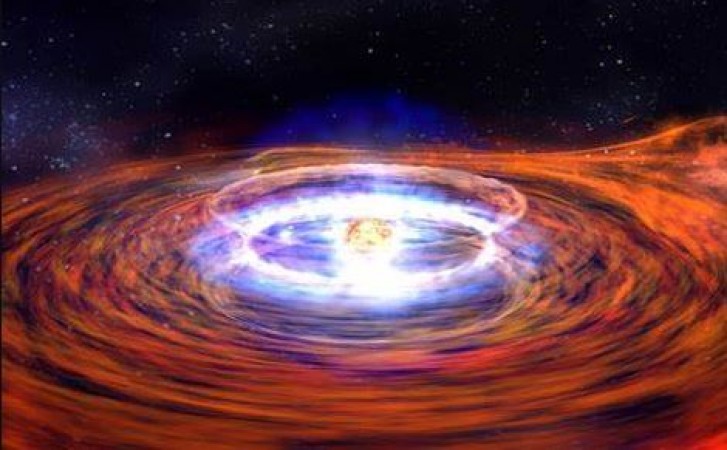
Neutron stars, the celestial wonders born from the remnants of massive stars, possess extraordinary characteristics that continue to captivate the imagination of astronomers and astrophysicists worldwide. With their unimaginable density and astonishing rotational speeds, these cosmic giants unleash powerful beams of radiation, transforming into mesmerizing pulsars that grant us a glimpse into the depths of the universe. In this article, we will embark on a journey to unravel the mysteries of neutron stars and the mesmerizing phenomenon of pulsars.
1. Introduction: Unveiling the Neutron Star
The universe is a canvas of celestial marvels, and among them, neutron stars stand out as some of the most intriguing objects. Formed through the dramatic collapse of massive stars, these remnants harbor immense gravitational forces, giving rise to their extraordinary properties.
2. The Formation of Neutron Stars
When a massive star exhausts its nuclear fuel, a catastrophic event known as a supernova occurs. The core of the star collapses under its own gravity, resulting in a neutron star. This collapse is so powerful that it squeezes the matter within the core to extreme densities, where protons and electrons combine to form neutrons.
3. Characteristics of Neutron Stars
Neutron stars possess remarkable attributes that distinguish them from other celestial objects. Their immense density allows them to pack the mass of several suns within a sphere no larger than a city. The gravity on their surface is incredibly strong, leading to an escape velocity close to the speed of light.
4. The Pulsating Marvels: Understanding Pulsars
Pulsars are rapidly rotating neutron stars that emit beams of electromagnetic radiation. As the star spins, these beams sweep across space, causing periodic pulses of radiation to be observed on Earth. These cosmic lighthouses can rotate hundreds of times per second, emitting beams that can be detected across vast distances.
5. Observing Pulsars: The Role of Radio Telescopes
To detect and study pulsars, astronomers rely on specialized instruments called radio telescopes. These telescopes capture the radio waves emitted by pulsars and convert them into observable signals. By analyzing these signals, scientists can decipher valuable information about the properties and behavior of pulsars.
6. The Impact of Pulsar Discoveries
The discovery of pulsars has had a profound impact on various fields of study. Pulsars have been utilized to confirm Einstein's theory of general relativity, contribute to our understanding of interstellar medium, and even aid in the search for gravitational waves. Their significance in astrophysics cannot be overstated.
7. Neutron Stars and Black Holes: A Connection
Neutron stars and black holes, both products of stellar collapse, share similarities but also distinctive features. While neutron stars are incredibly dense and have a solid surface, black holes are infinitely dense with an event horizon from which nothing can escape. Exploring their connection provides valuable insights into the nature of gravity and the universe itself.
8. Unanswered Questions: Unsolved Mysteries of Neutron Stars
Despite extensive research, numerous mysteries surrounding neutron stars persist. Scientists are still working to understand the formation of magnetars, neutron stars with incredibly strong magnetic fields. Additionally, the mechanism behind the high-energy radiation emitted by pulsars remains a topic of active investigation.
9. The Future of Neutron Star Research
Advancements in technology and the collaborative efforts of astronomers worldwide continue to push the boundaries of our knowledge about neutron stars and pulsars. Future missions, such as the Square Kilometre Array (SKA), hold the promise of unraveling further secrets about these enigmatic cosmic entities.
10. Conclusion
Neutron stars and their pulsating counterparts, pulsars, provide a window into the extremes of the universe. With their mind-boggling density and incredible rotational speeds, they offer invaluable insights into the workings of gravity, space-time, and the cosmos itself. Exploring these celestial marvels unlocks the door to a deeper understanding of the vastness and wonders of our universe.
India's Space Program Soars, ISRO Inspires Scientific Advancement